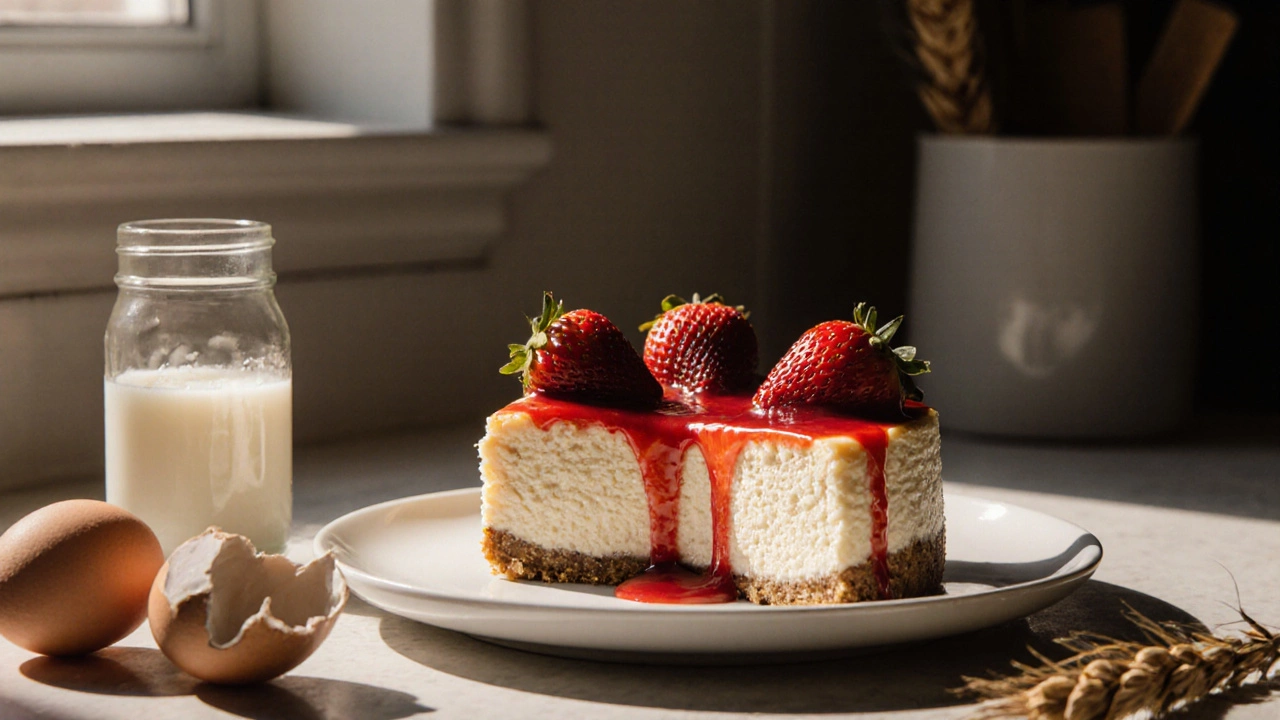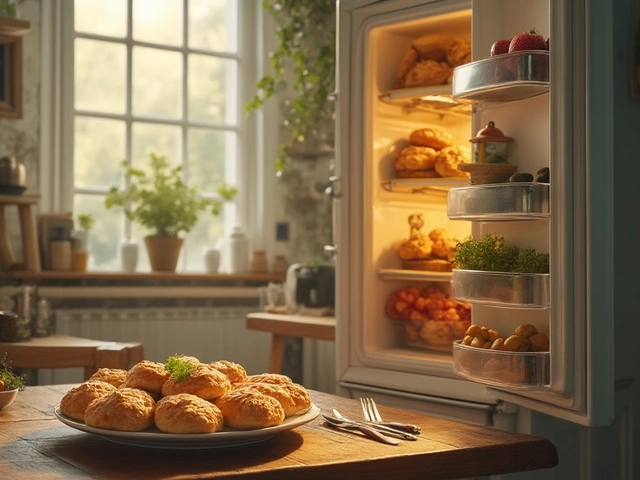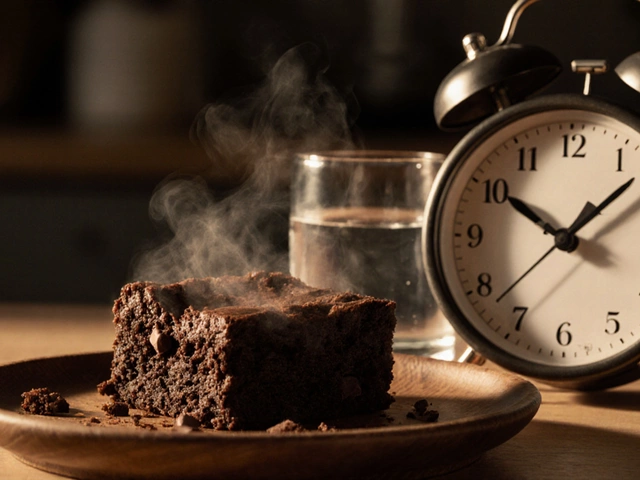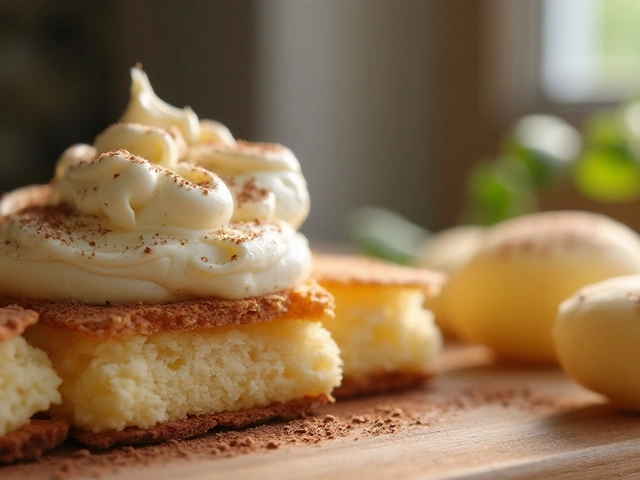When you picture a slice of Cheesecake is a dense, creamy dessert made from cream cheese, eggs, sugar, and a crust, usually of crushed biscuits or graham crackers. It’s beloved for its silky texture and endless flavor variations, from classic New York style to fruit‑topped creations. you probably aren’t thinking about the moments when that indulgence could actually hurt you. Below we unpack the most common health scenarios where enjoying cheesecake might be a bad idea, and give you practical ways to stay safe without giving up dessert forever.
Allergy and Intolerance Flashpoints
If you’re allergic to any of cheesecake’s core ingredients, the warning signs are obvious: hives, swelling, trouble breathing, or an upset stomach. The most frequent culprits are dairy, eggs, and gluten. Below are the key conditions and why they matter.
- Lactose intolerance is the inability to digest lactose, the sugar found in milk and dairy products. Even though the body can handle small amounts, a typical cheesecake slice can contain 15‑20 g of lactose, enough to trigger cramps, gas, and diarrhea.
- Gluten sensitivity refers to adverse reactions to gluten without the autoimmune features of celiac disease. Most crusts are made from wheat‑based crackers, so a single bite can cause bloating, headaches, or skin rashes for sensitive individuals.
- Egg allergy is an immune response to proteins found in egg whites or yolks. Because eggs bind the filling, an allergic reaction can appear within minutes of eating.
If any of these apply, look for alternative recipes that swap dairy for coconut cream, gluten‑free nuts or oat crusts, and use chia‑seed “eggs” or commercial egg replacers. The taste may shift, but you’ll still enjoy the texture.
When Food Safety Becomes Critical
Cheesecake is a low‑acid, high‑protein food, which makes it a perfect breeding ground for harmful bacteria if not handled correctly. Two main risks dominate:
- Raw or under‑cooked eggs can harbor Salmonella a bacteria that causes food poisoning with symptoms like fever, vomiting, and diarrhea. Even a brief lapse in baking time can leave egg proteins unsafe.
- Improper refrigeration allows Listeria monocytogenes a pathogen that thrives in refrigerated foods and can cause severe illness, especially in pregnant people and the elderly. Leaving cheesecake at room temperature for more than two hours dramatically raises the risk.
To stay safe, always bake until the center reaches 160 °F (71 °C) and chill the finished cake within two hours of removal from the oven. Store leftovers in airtight containers and consume within three to five days.
Heart Health and Cholesterol Concerns
Cheesecake is notoriously rich in saturated fat and cholesterol. One standard slice (about 100 g) can contain roughly 20 g of saturated fat and 120 mg of cholesterol. For people managing heart disease or high cholesterol, that’s a substantial dietary load.
Guidelines from the American Heart Association recommend keeping saturated fat under 6 % of total daily calories. If you’re already cutting back, a single slice can push you over that limit.
Here are a few ways to enjoy cheesecake while protecting your heart:
- Swap full‑fat cream cheese for a reduced‑fat version or blend half cream cheese with Greek yogurt.
- Use a fruit puree or berry compote as a topping instead of sugary glaze.
- Limit portion size to a bite‑sized square (about 50 g) and pair it with a fiber‑rich salad to blunt the blood‑lipid response.
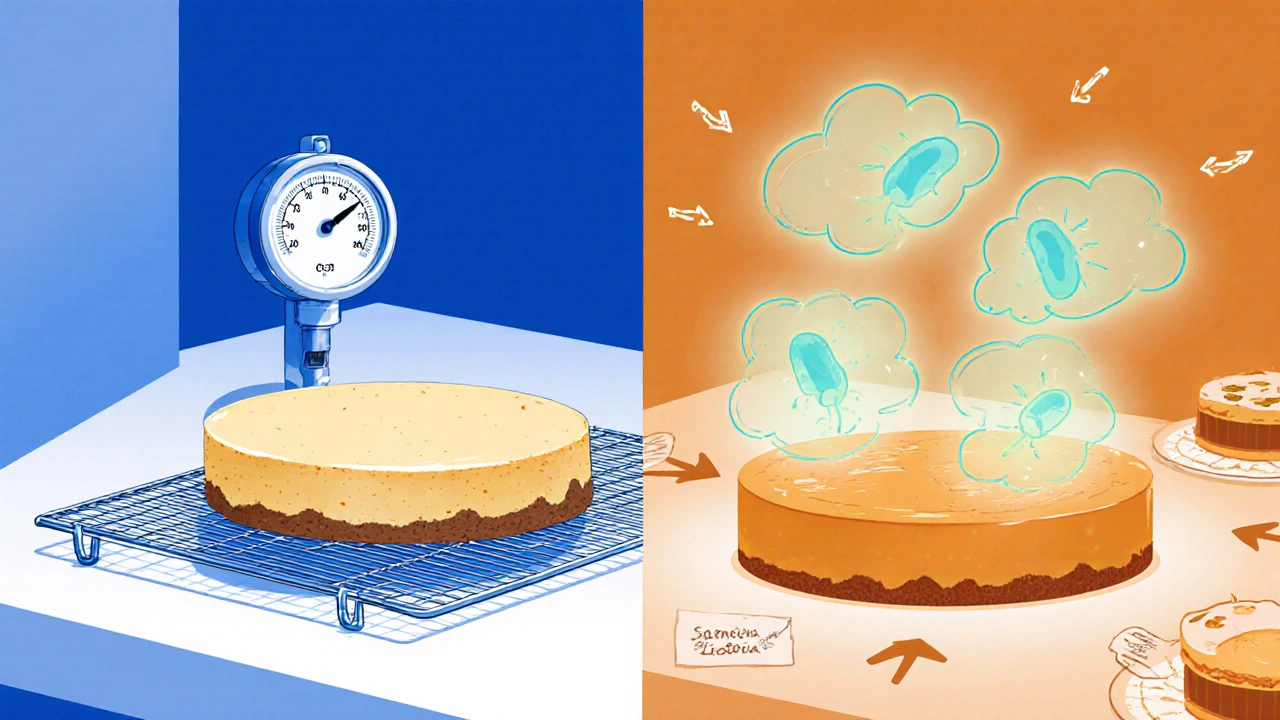
Diabetes and Blood‑Sugar Spikes
Cheesecake’s sugar content can be a troublemaker for anyone monitoring glucose. A typical slice may hold 30‑40 g of added sugar, enough to cause a rapid rise in blood‑sugar levels.
People with type 1 or type 2 diabetes should consider these adjustments:
- Replace granulated sugar with natural sweeteners like erythritol or stevia, which have a minimal impact on blood glucose.
- Incorporate low‑glycemic‑index ingredients such as almond flour crusts or nut‑based toppings.
- Track the carbohydrate count: a standard slice is roughly 25 g carbs; plan it into your daily allowance and balance with physical activity.
Pregnancy, Kidney Disease, and Other Special Conditions
During pregnancy, the immune system is slightly suppressed, making you more vulnerable to Listeria. A contaminated cheesecake could lead to miscarriage or severe newborn infection. The safest route is to avoid unpasteurized dairy and ensure thorough cooking.
For patients with chronic kidney disease, the high sodium and phosphorus in many cheesecake recipes can stress the kidneys. One slice can deliver 200 mg of phosphorus-far above the recommended daily limit for stage 3‑4 kidney disease.
In each case, the rule of thumb is to either modify the recipe (using low‑sodium cream cheese, no added salt) or skip the dessert altogether during flare‑ups.
Practical Decision Table
| Condition | Why Cheesecake Can Be Risky | Safe Alternative or Adjustment |
|---|---|---|
| Lactose intolerance | High lactose content triggers digestive upset. | Use lactose‑free cream cheese or coconut‑based spreads. |
| Gluten sensitivity | Wheat‑based crust adds gluten. | Replace crust with almond flour or oat‑based crumbs. |
| Egg allergy | Egg proteins cause immune reactions. | Substitute with chia‑seed “eggs” or commercial replacer. |
| Raw‑egg risk (Salmonella) | Undercooked eggs can harbor bacteria. | Ensure internal temperature reaches 160 °F; use pasteurized eggs. |
| Heart disease / high cholesterol | Saturated fat and cholesterol load. | Half‑fat cream cheese, add Greek yogurt, reduce portion. |
| Diabetes | High added sugar spikes glucose. | Swap sugar for erythritol, count carbs, limit serving. |
| Pregnancy (Listeria risk) | Unpasteurized dairy can carry Listeria. | Use pasteurized dairy, bake thoroughly, avoid raw batter. |
| Kidney disease | Excess sodium and phosphorus strain kidneys. | Low‑sodium cream cheese, no added salt, smaller slice. |
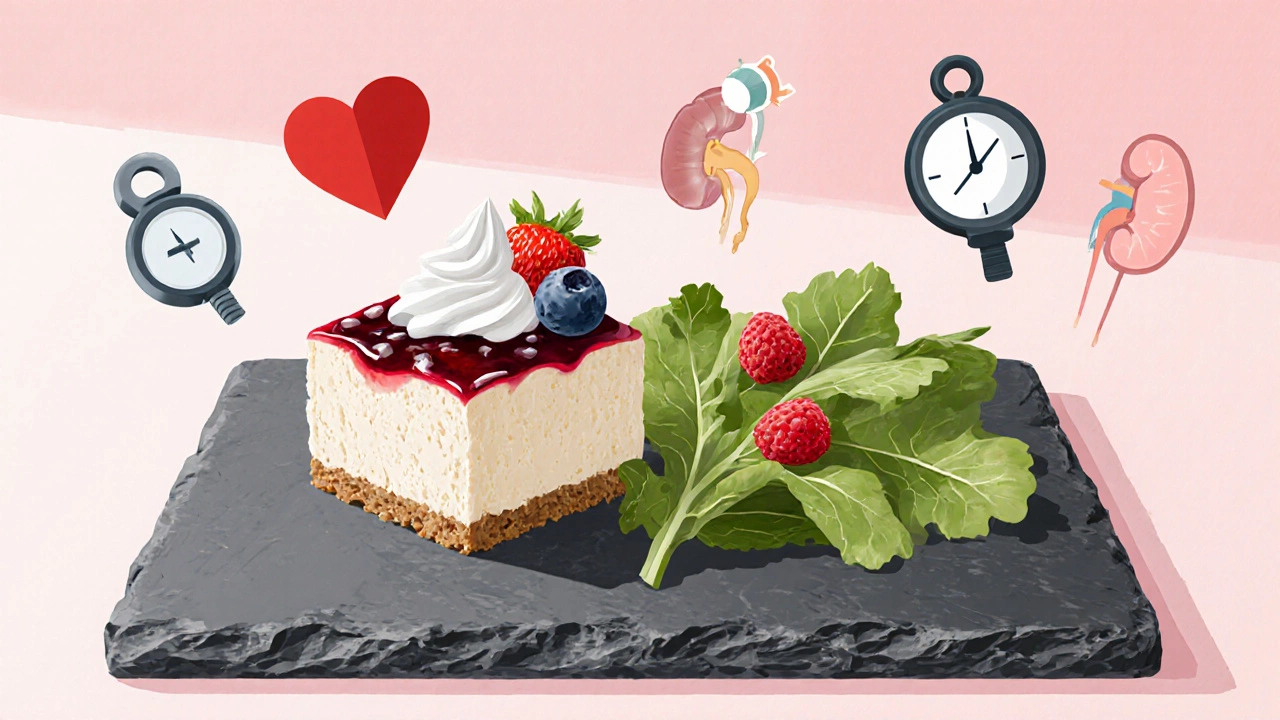
Tips for Safer Homemade Cheesecake
Even if you’re not in any high‑risk group, following best practices can keep every slice safe and tasty.
- Buy cream cheese, eggs, and dairy from reputable sources; check expiration dates.
- Keep all ingredients refrigerated until you’re ready to mix.
- Sanitize all bowls, mixers, and surfaces to avoid cross‑contamination.
- Use a food‑safe thermometer: the batter should reach at least 160 °F.
- Cool the baked cake quickly-place the pan in an ice‑water bath for 5 minutes before refrigerating.
- Label leftovers with the date; discard after five days.
Quick Checklist: Should You Eat That Slice?
- Do you have a known dairy, egg, or gluten allergy? Yes → skip or swap.
- Is the cake stored > 5 days or left out > 2 hours? Yes → discard.
- Are you managing heart disease, high cholesterol, or diabetes? Yes → choose a reduced‑fat, low‑sugar version.
- Are you pregnant or have a compromised immune system? Yes → ensure pasteurized ingredients and thorough baking.
- Otherwise? Enjoy a modest portion and savor the flavor!
Frequently Asked Questions
Can I eat cheesecake if I’m lactose intolerant?
Most traditional cheesecakes contain enough lactose to cause symptoms. Look for recipes that use lactose‑free cream cheese, almond milk, or coconut cream as substitutes. Those alternatives give a similar texture without the digestive upset.
Is it safe to eat a store‑bought cheesecake that’s been sitting out at a party?
Only if it’s been under two hours at room temperature. After that, the risk of bacterial growth, especially Listeria, rises sharply. When in doubt, throw it out.
Do raw‑egg cheesecake recipes increase my chance of food poisoning?
Yes. Raw or under‑cooked eggs can contain Salmonella. If you love no‑bake cheesecakes, use pasteurized eggs or egg‑free stabilizers like gelatin or agar‑agar to eliminate the risk.
How many calories are in a typical slice of New York‑style cheesecake?
Around 350‑400 kcal per 100 g slice, depending on the crust and topping. That’s why portion control matters, especially if you’re watching weight.
Is cheesecake safe for people with kidney disease?
Only with modifications. Choose low‑phosphorus, low‑sodium cream cheese, skip the salty crust, and keep the serving size small (about 30 g). Otherwise the phosphorus and sodium load can worsen kidney function.
In short, cheesecake is a joy worth sharing, but it’s not a one‑size‑fits‑all food. By matching the dessert to your health status, storage habits, and preparation methods, you can keep the pleasure alive without compromising safety.

